This traditional savory Chinese Winter Solstice Soup is loaded with flavor, is incredibly comforting, and totally hits the spot on a cold winter's night! Make it to celebrate the Winter Solstice or enjoy it any night you're craving a bowl of hot delicious soup!
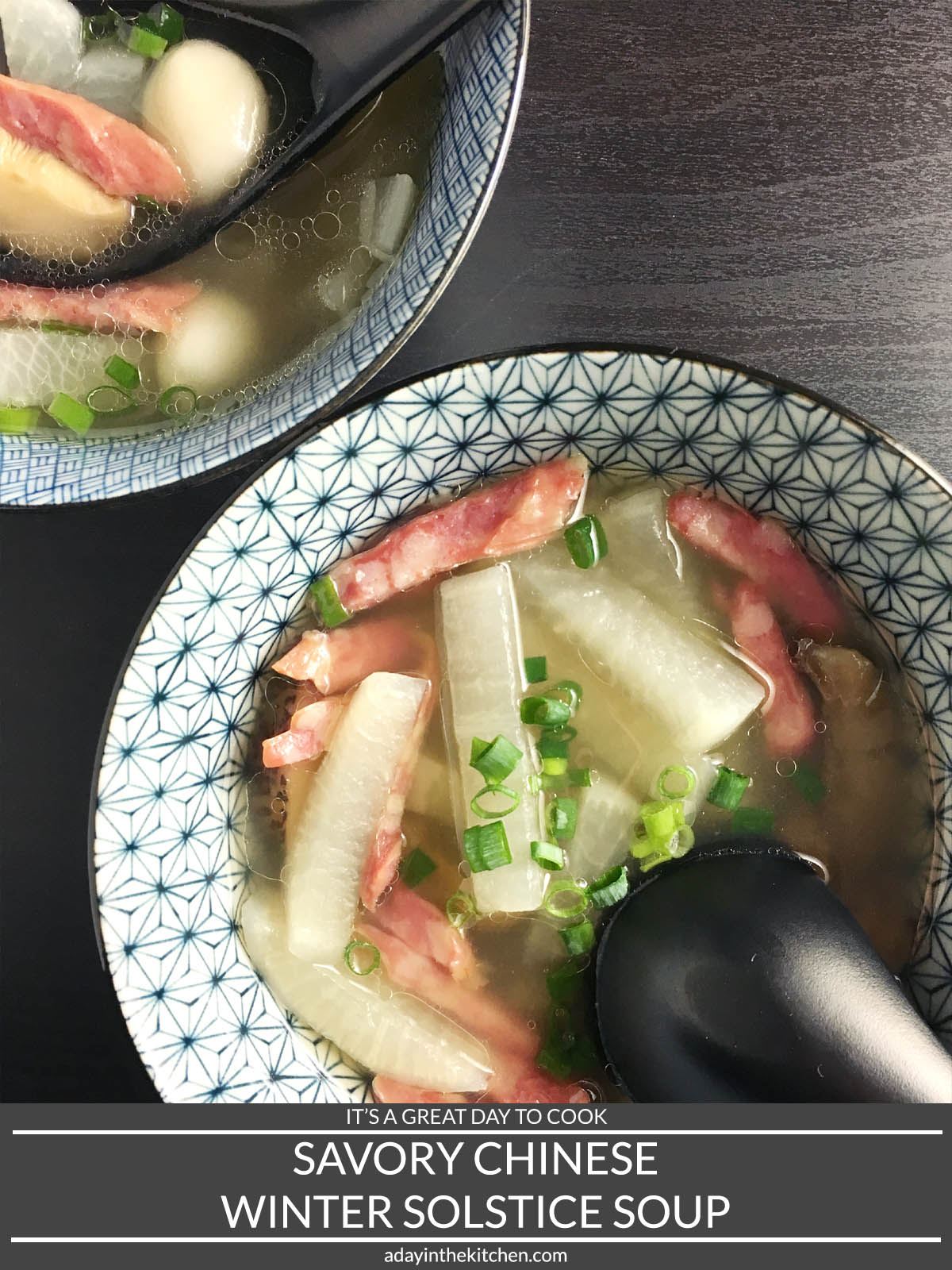
What Is Chinese Winter Solstice Soup?
I only learned of the actual name...Chinese Winter Solstice Soup...a few years ago. "Yuan", as my mum simply called it, is a dish she made every year on or about December 21st, whenever the Winter Solstice fell...thus the name!
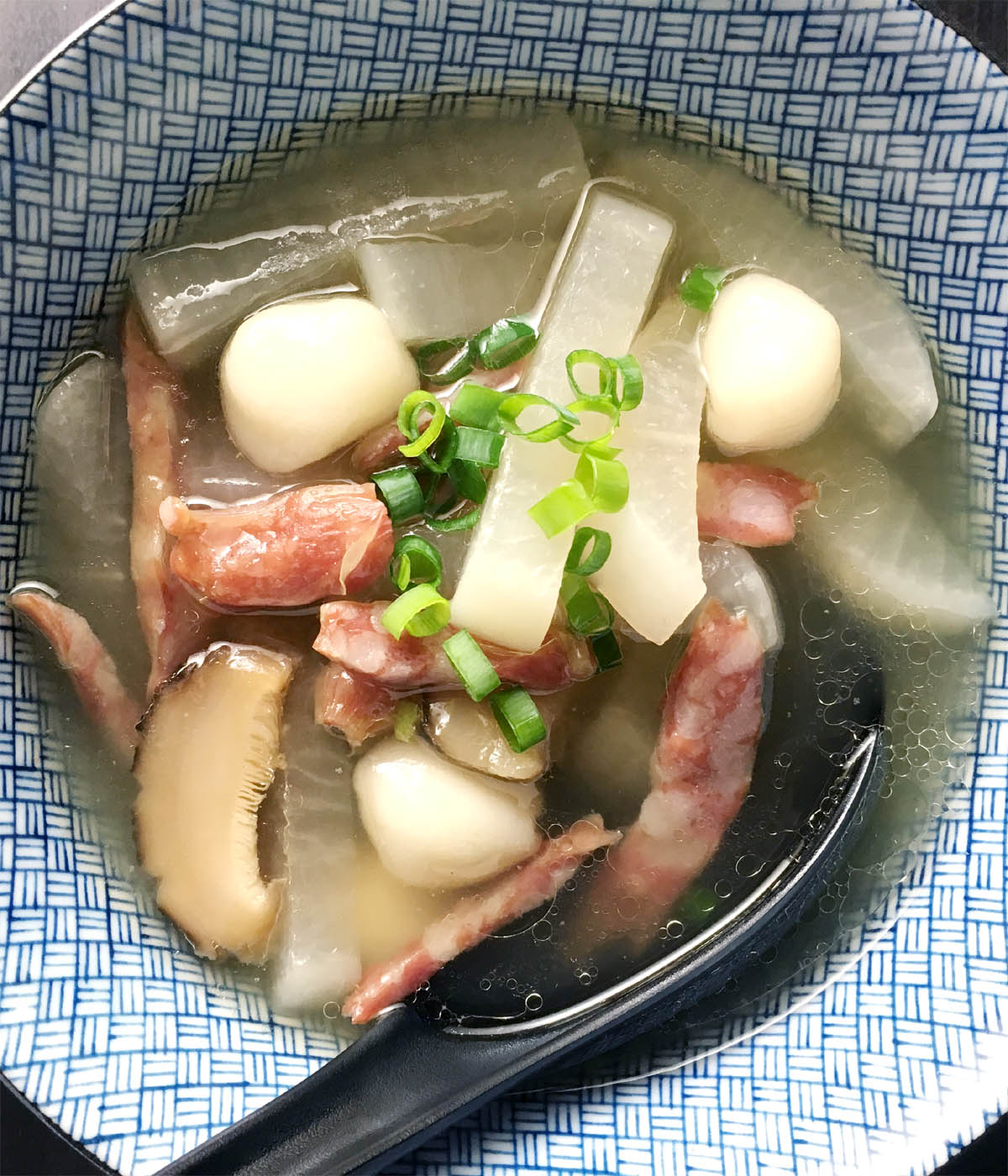
"Tong yuan", as it can also be called in Chinese, apparently celebrates the last day of the longest hours of darkness and the onset of the longer daylight hours to come. The soup is a meal in itself and is most typically eaten with the whole family as it is also a meal significant of family reunions.
It's a traditional Chinese dish that can have different variations. This version is how my mum made hers and brings back so many childhood memories. While I haven't had my mum's soup in years, I'm happy to have figured out how to make it like how she did and share the results with you!
How To Make the Broth
In a large pot, combine raw chicken bones, water, a chunk of ginger and some salt and bring to a boil over medium-high heat. I use any combination of chicken bones, wings, wing tips and carcass. Avoid using any meaty pieces.

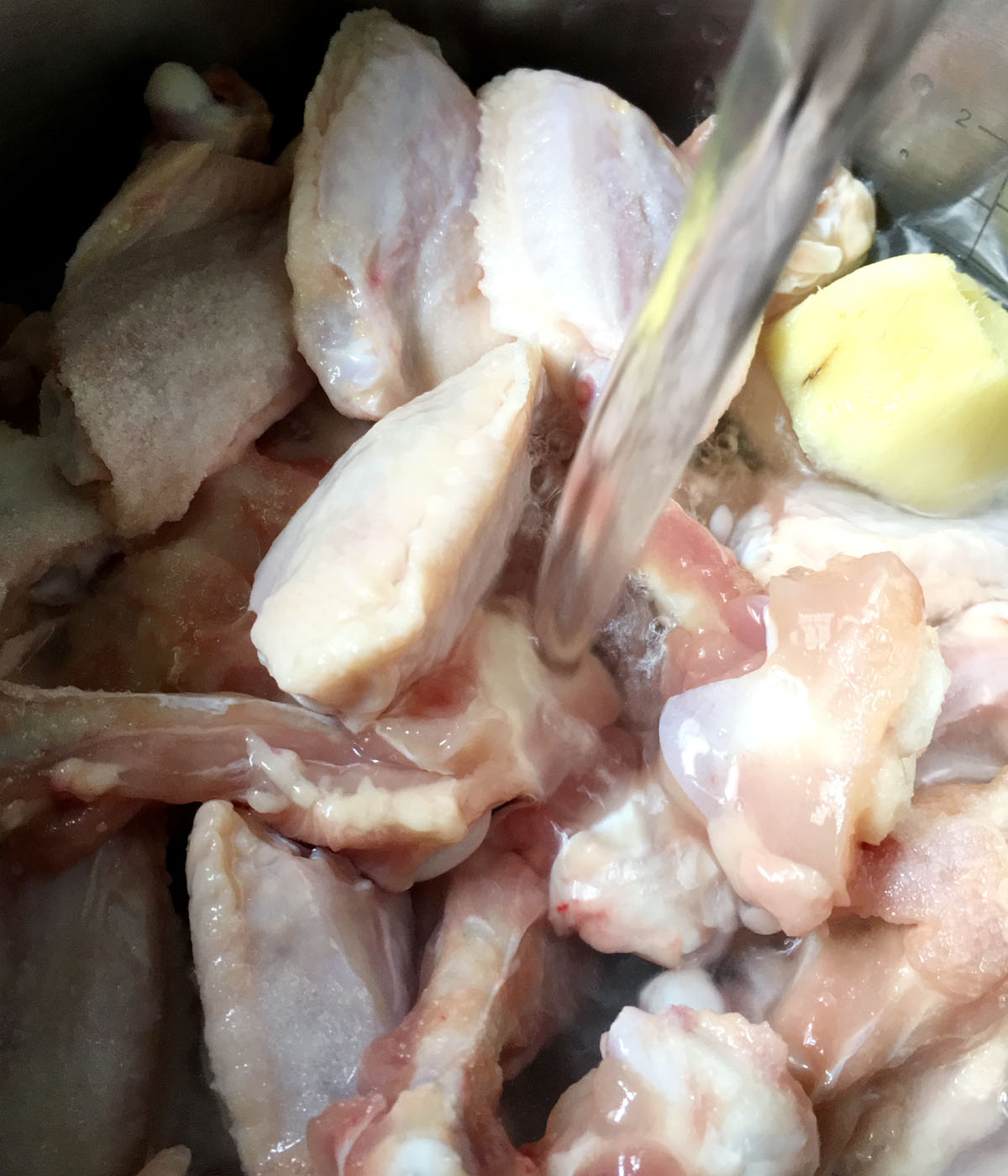
Once the broth comes to a boil, reduce the heat to medium so it is just gently boiling. Skim off and discard any scum and debris that bubble up to the surface to get a "clean" broth. Lower the heat, cover with a lid leaving a slight gap, and let it simmer for a couple of hours.

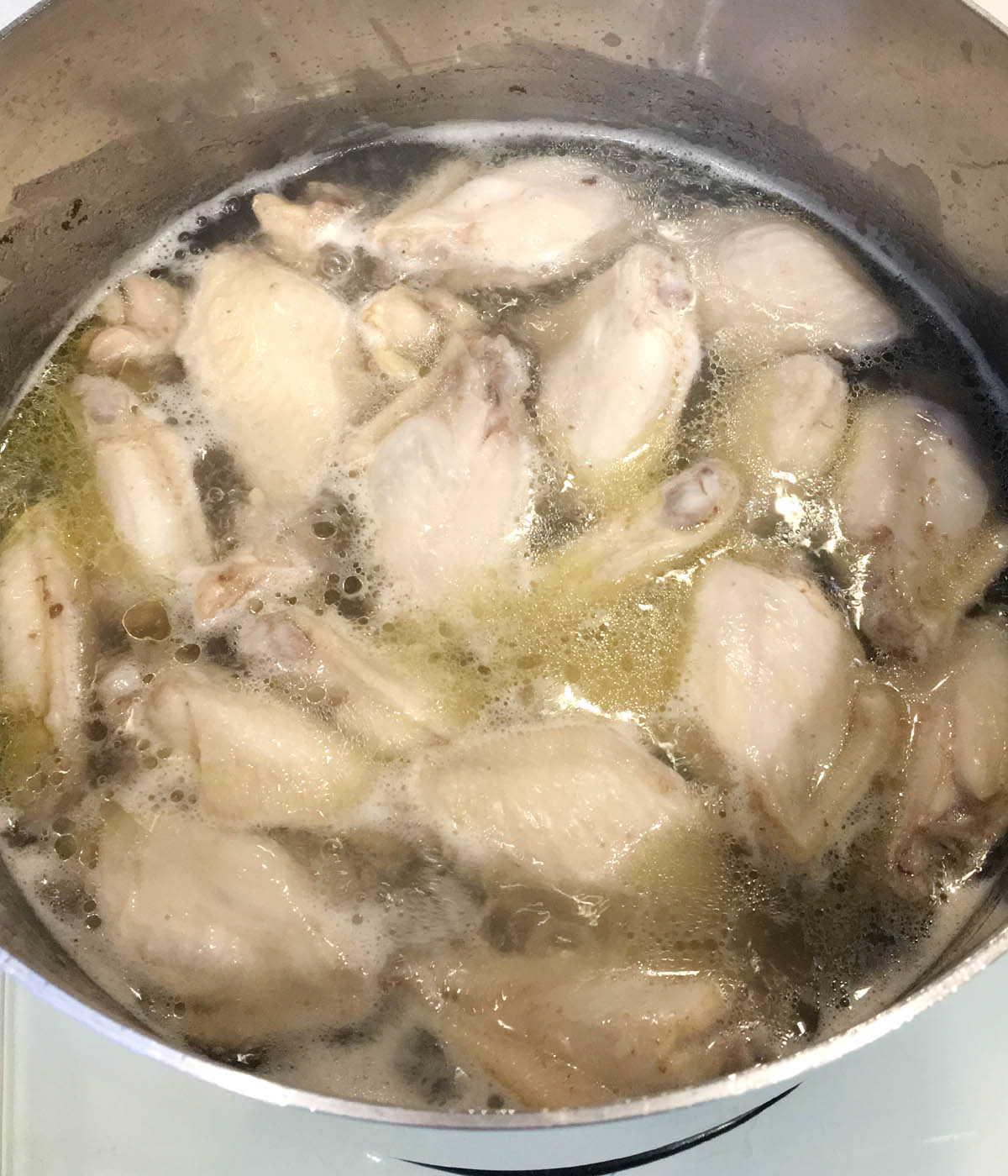
Once the broth has simmered for a couple of hours, remove the bones and any debris using a skimmer, or pour the soup through a sieve into another pot.
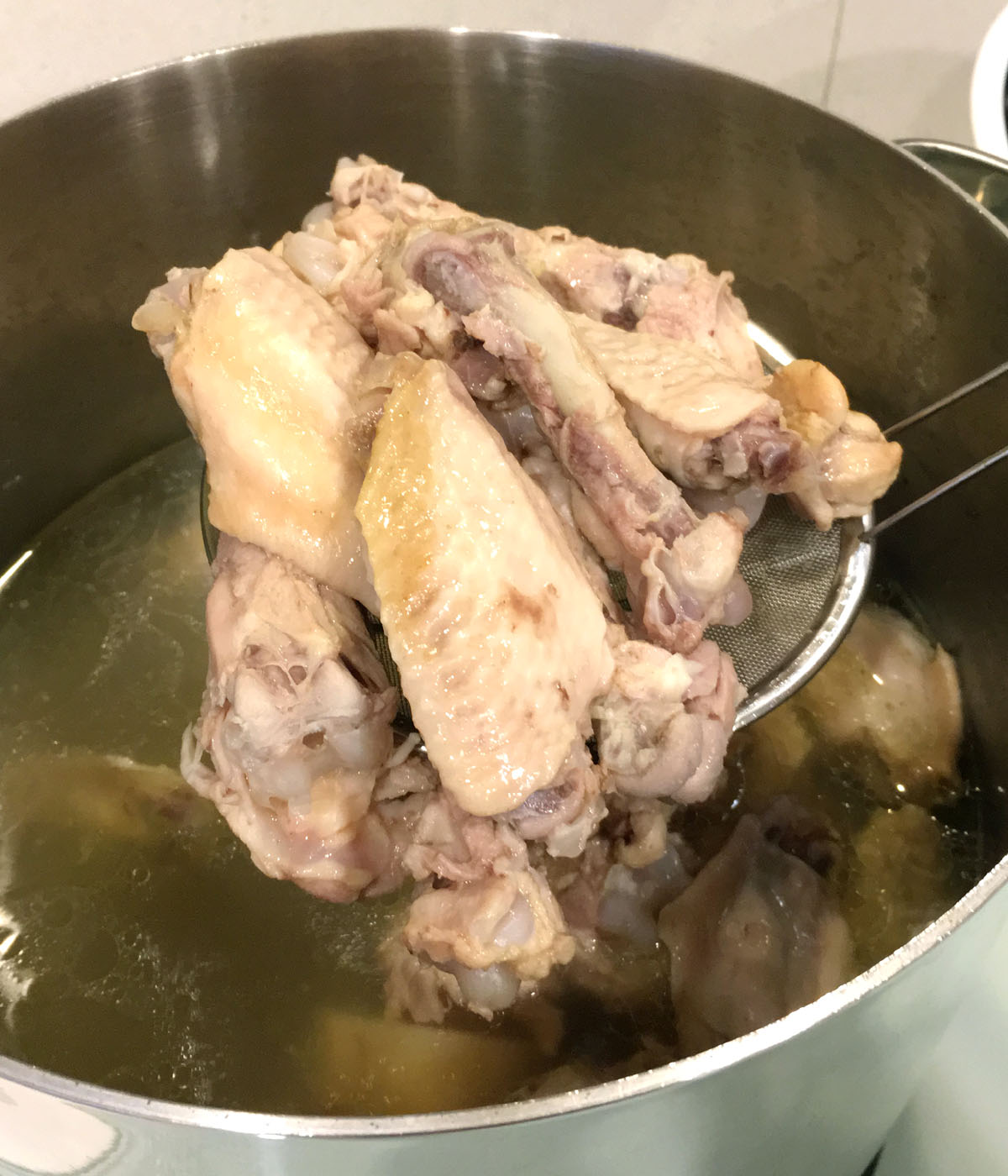
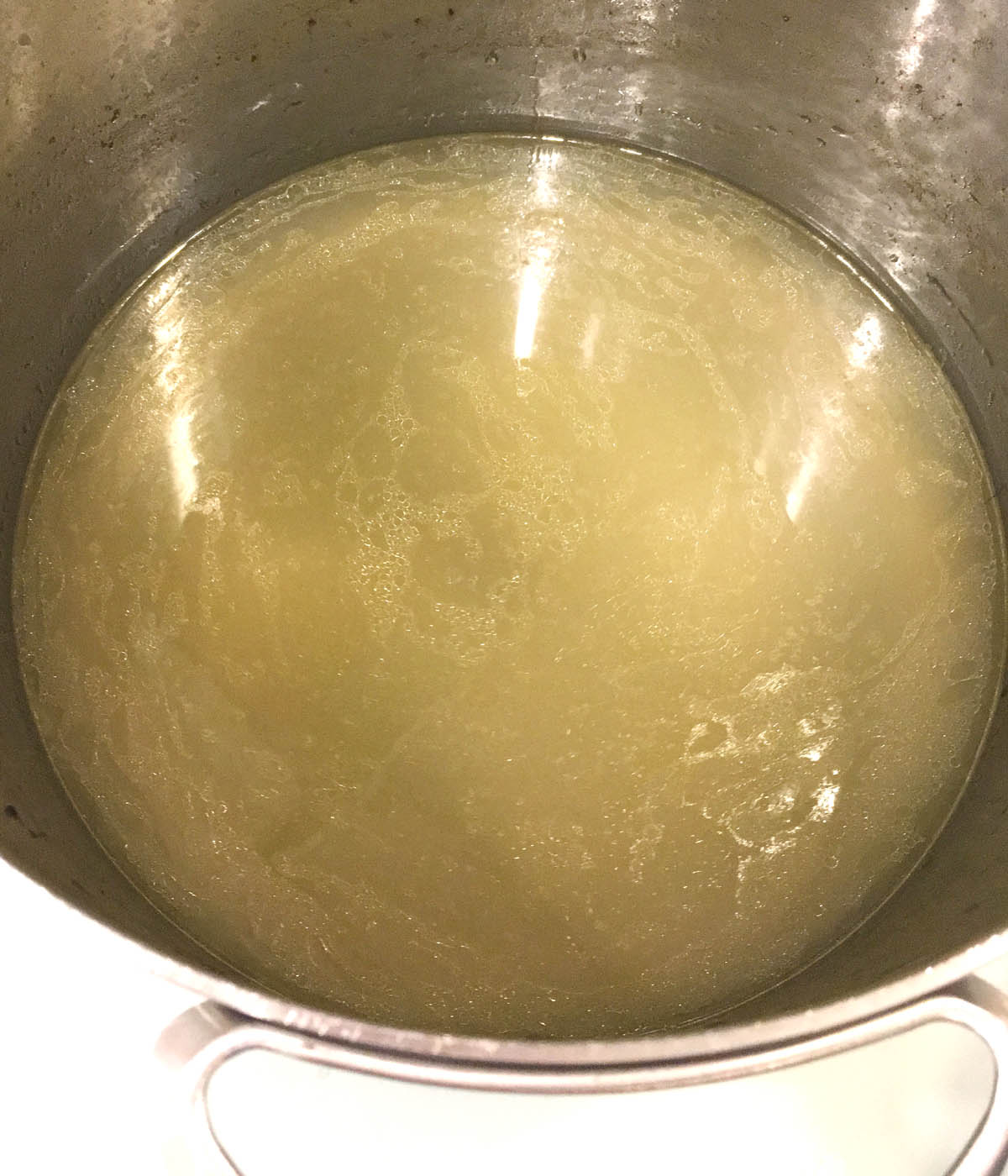
At this point, you can proceed with making the winter solstice soup or you can cool the broth down and refrigerate it to make the soup another day.
How to Prepare the Ingredients
Chinese Preserved Sausage (Lop Cheng)
The lop cheung, or Chinese preserved sausage, gives a smoky, salty, sweet component to the soup. Cut the sausages in half lengthwise, then make slanted cuts from each half.
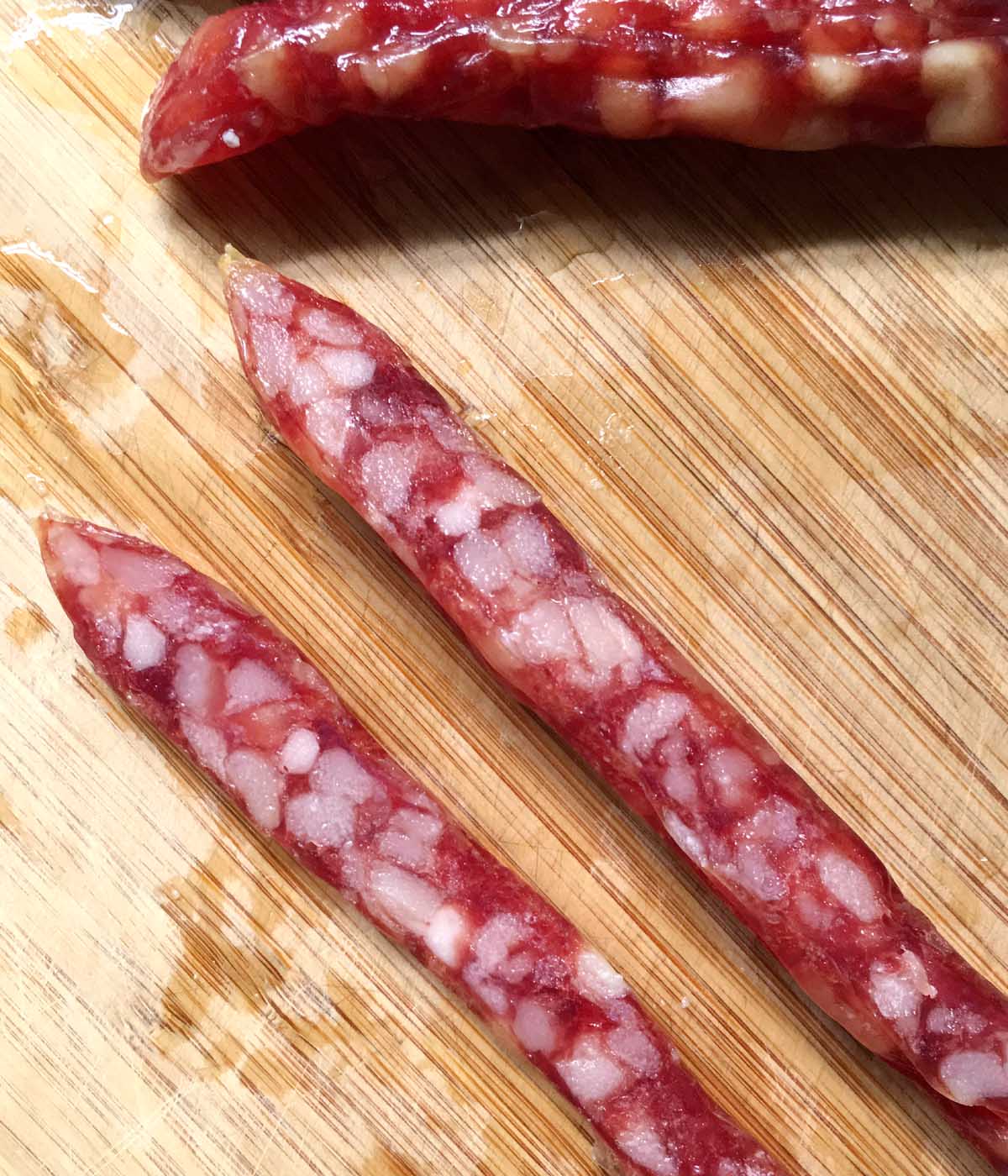
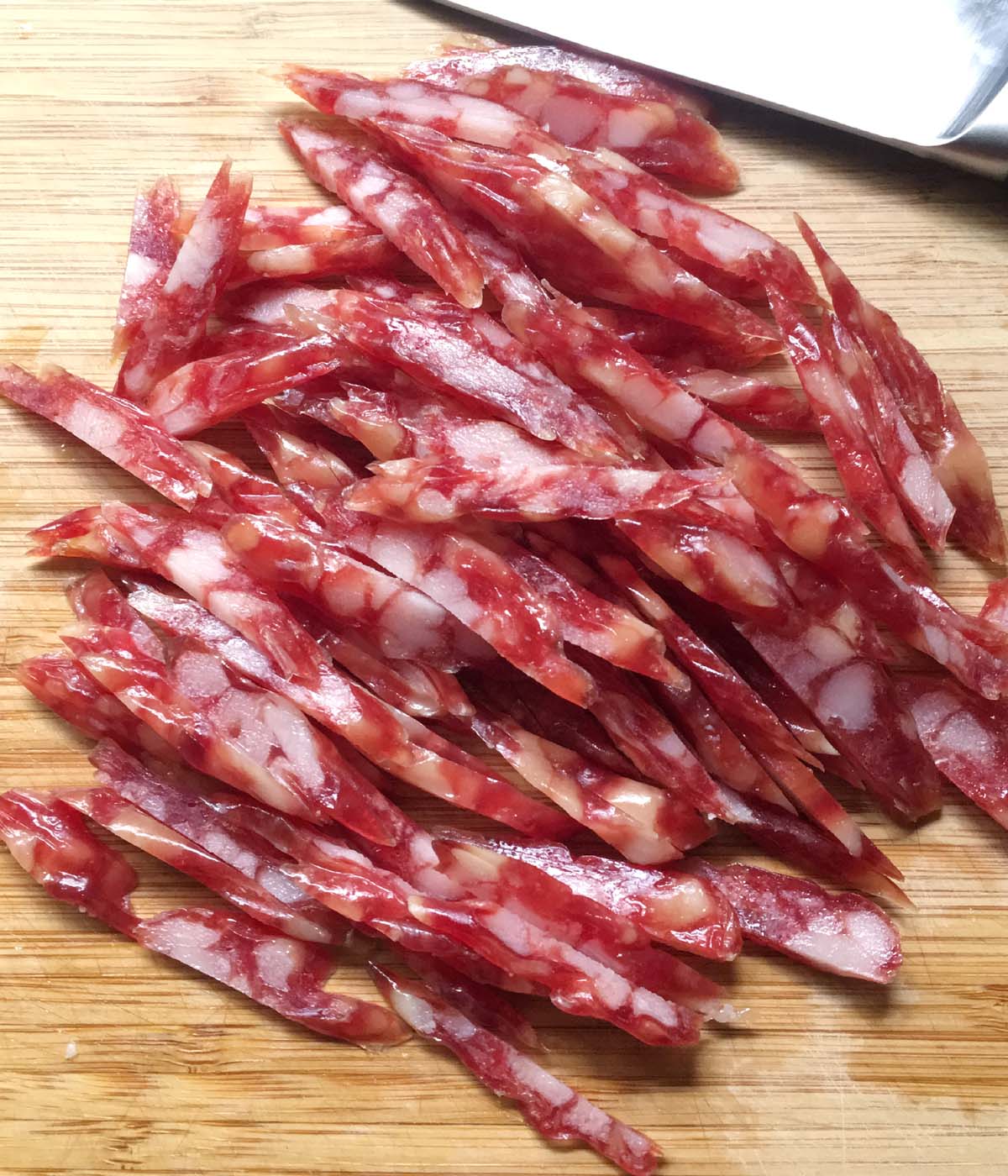
Depending on how much you like Chinese sausages (and I like them a lot), you can use 2-4.
Dried Chinese Mushrooms
The Chinese mushrooms give the soup a major dose of umami, or a savory depth to the overall flavor. Soak the dried mushrooms for a few hours (or overnight) to completely rehydrate them.
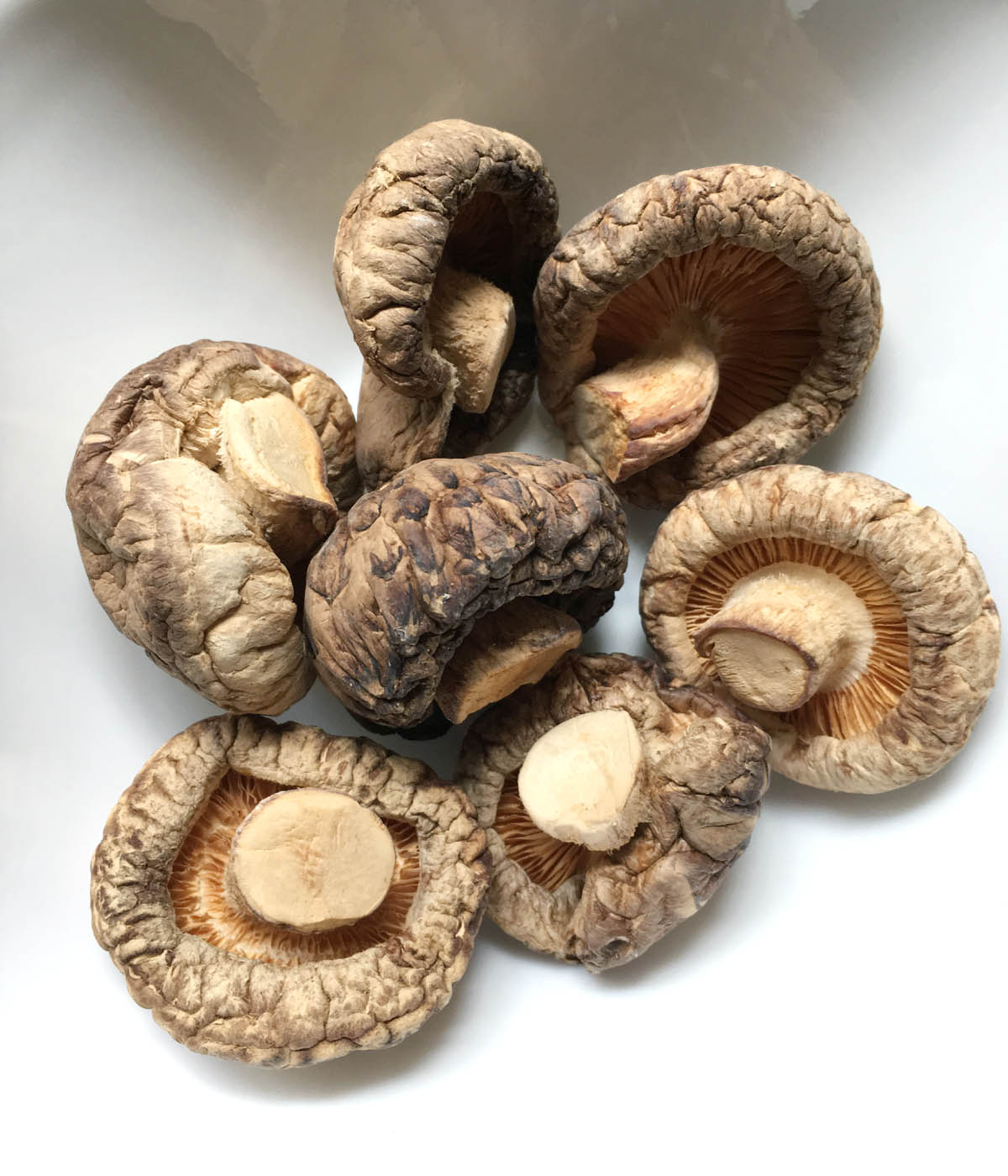

Once they are well soaked, they will be soft and easy to handle. Cut off and discard the hard stems, then slice the mushrooms caps.
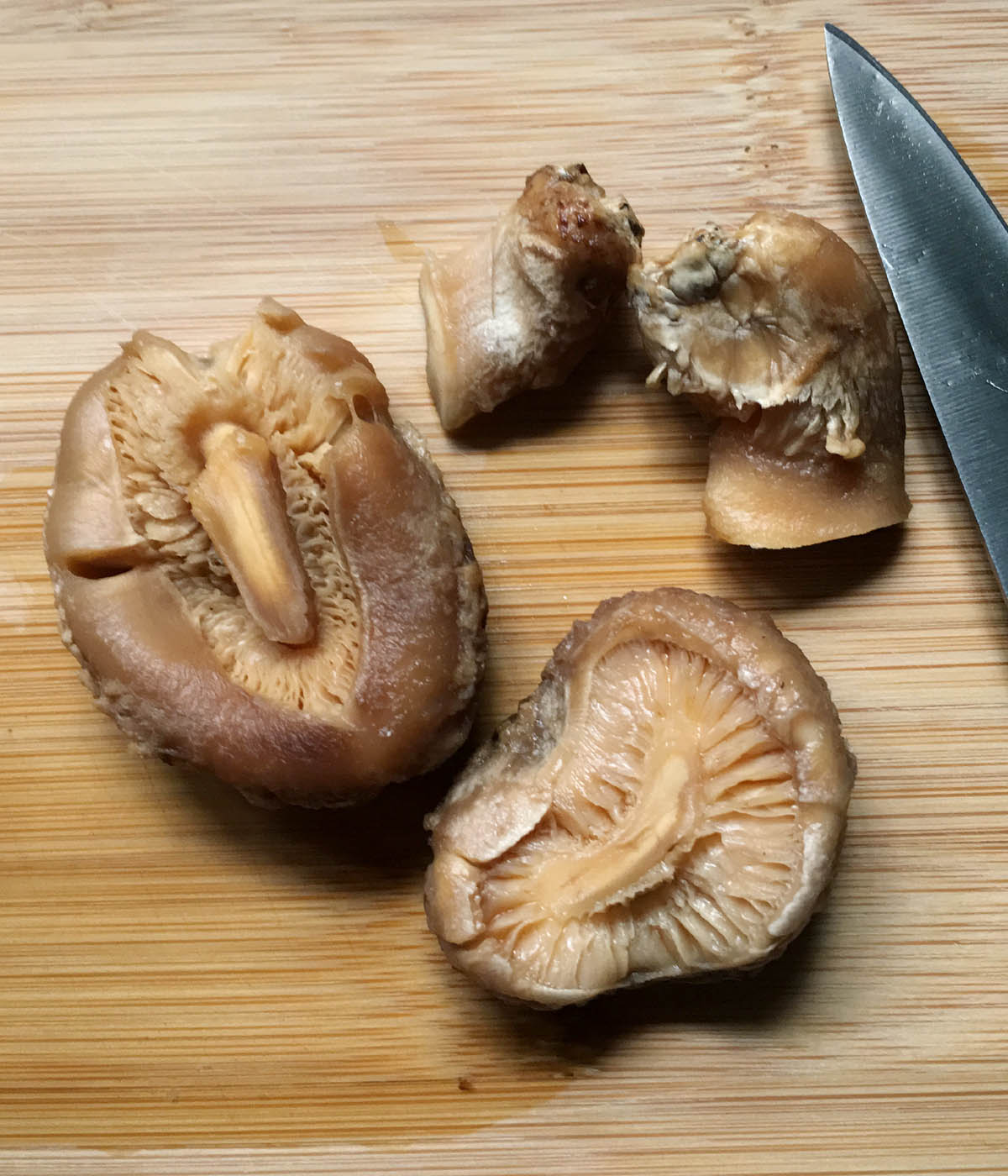

Daikon Radish (Lo baak)
The daikon, or Chinese white radish, resembles a fat giant carrot in shape, and gives a sweetness to the soup. Simply peel the daikon, slice into discs, then slice the discs into sticks.
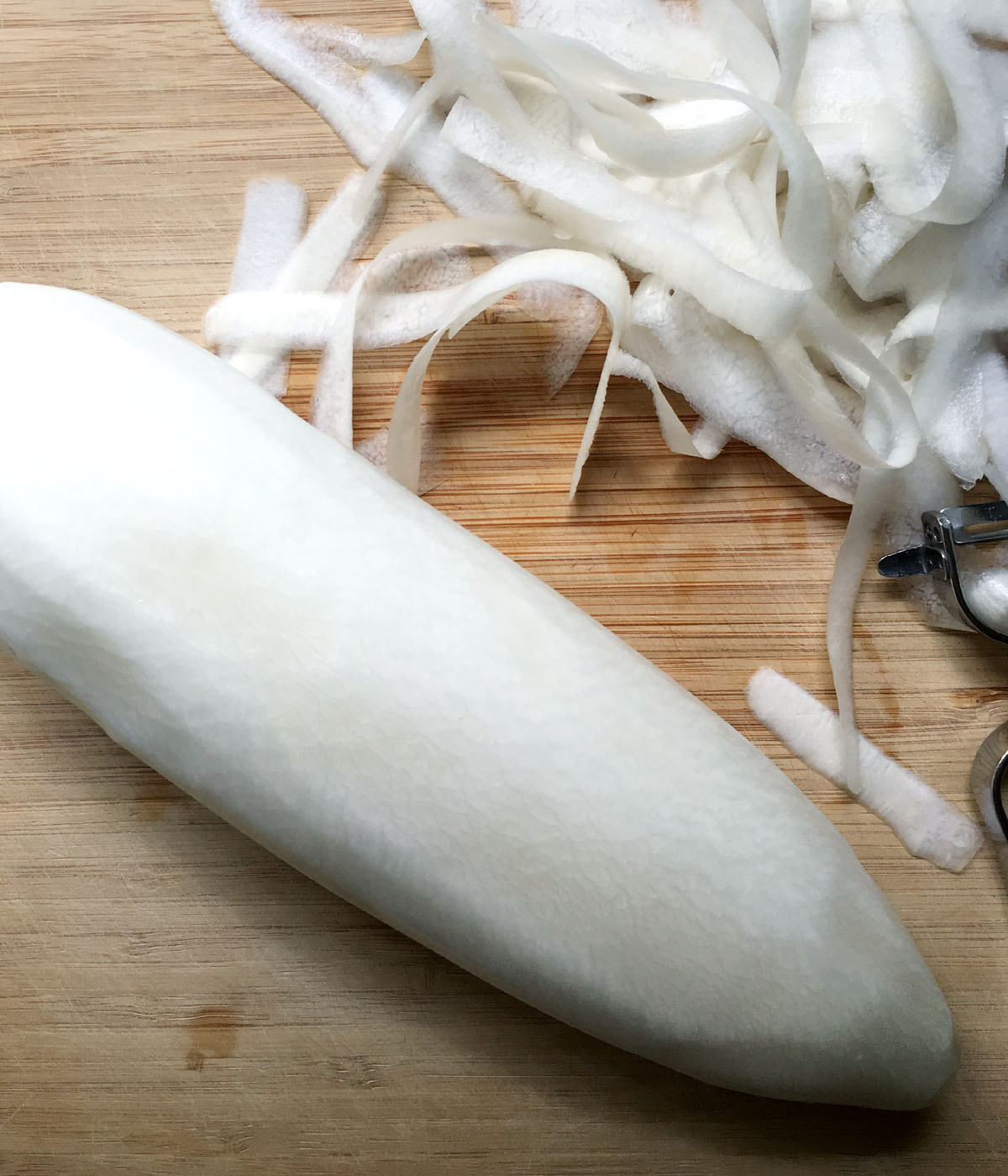
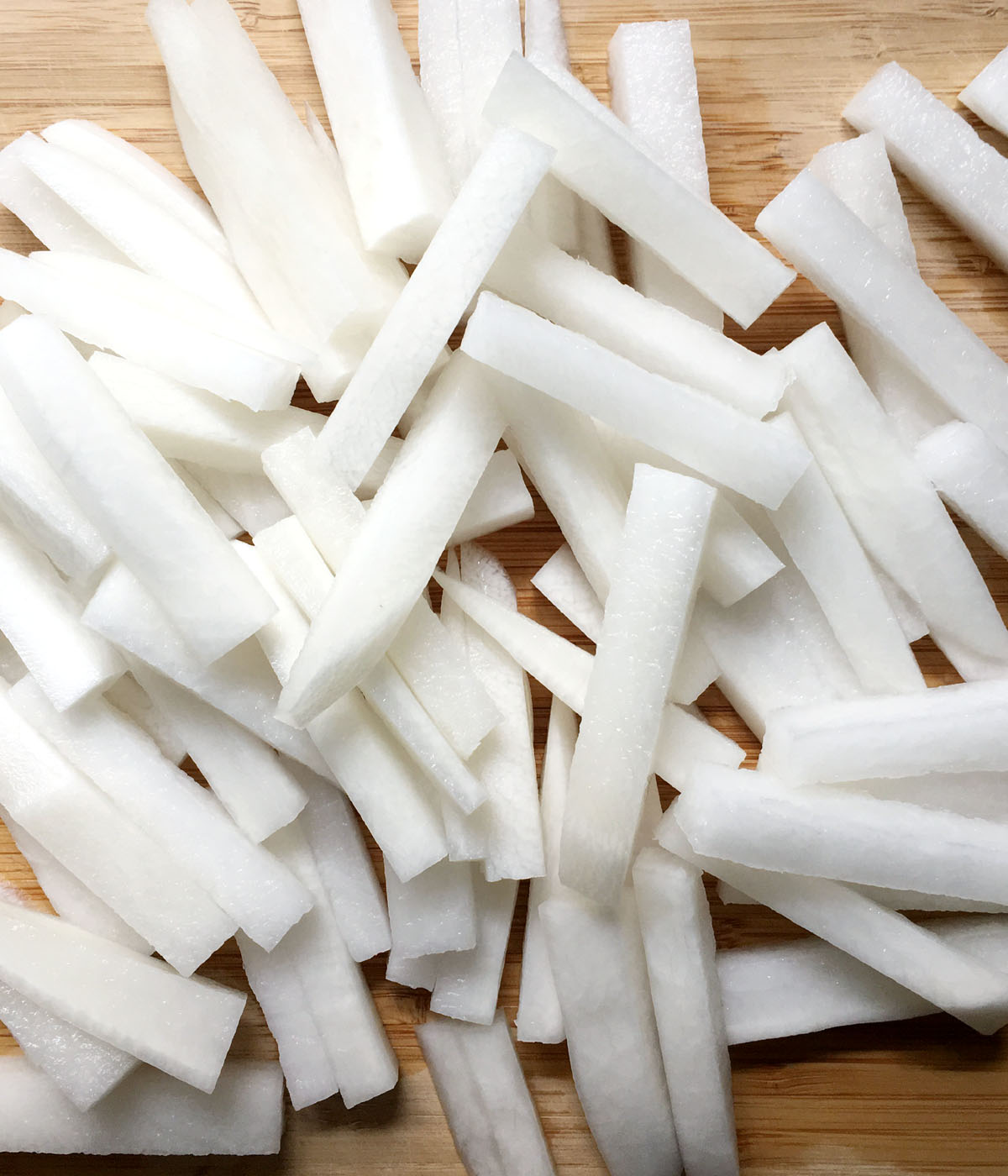
Chewy Rice Balls (Yuan)
The yuan, the supposed star of this soup is made of glutinous rice flour and water. Also called sweet rice flour, the flour does not contain gluten nor is it sweet. It is merely a flour that has a sticky quality about it when cooked, and these dough balls have a sticky, squidgy, doughy sort of texture when eaten in the soup.
Important: Do not use regular rice flour as the dough balls will not float and they will be hard when cooked, not soft and chewy.
Mix the rice flour with water until you get consistency that is similar to Play-Doh...not too sticky and not too dry. To prevent the dough from drying out, keep the it in a bowl covered with plastic wrap or in a resealable container until you are ready to make the dough balls.
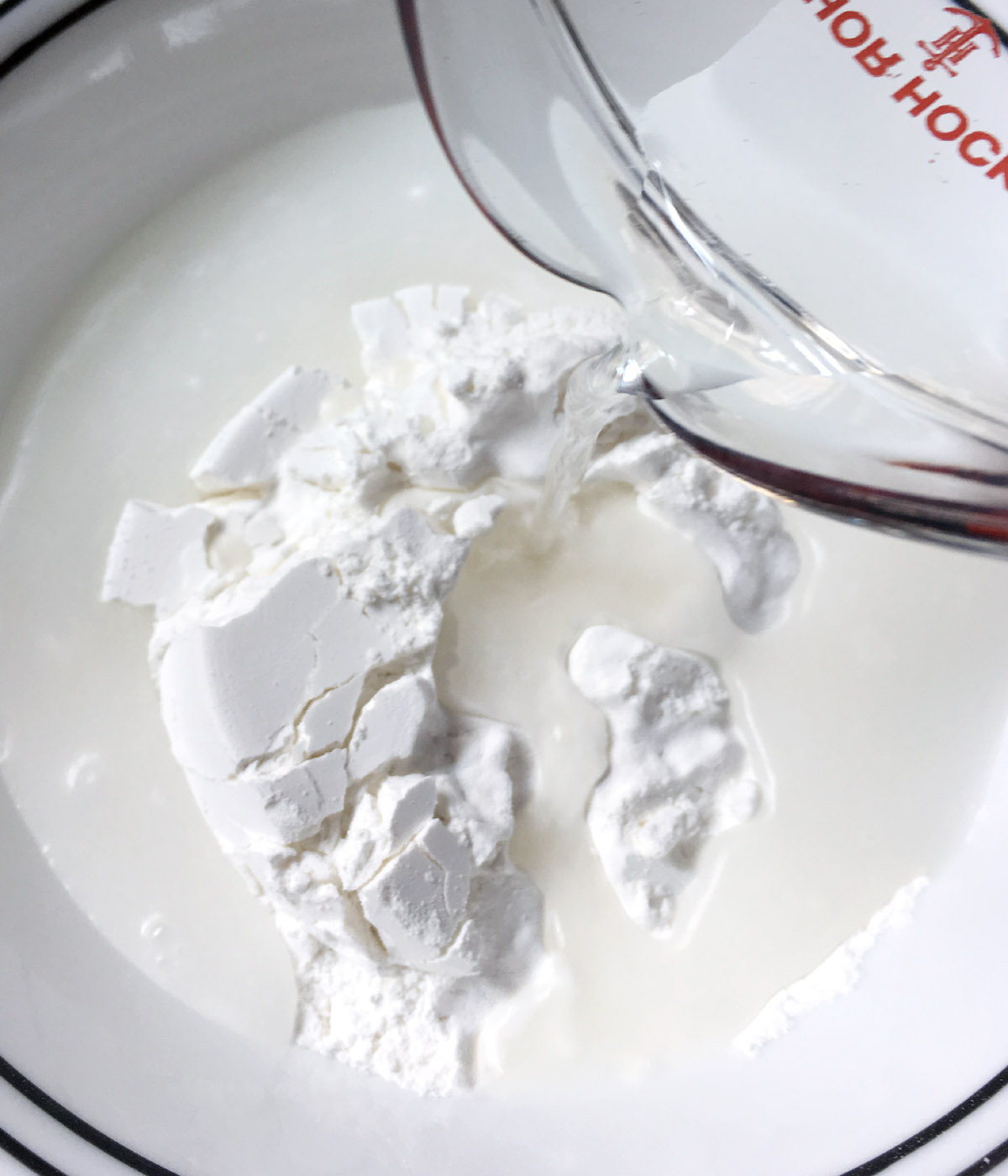
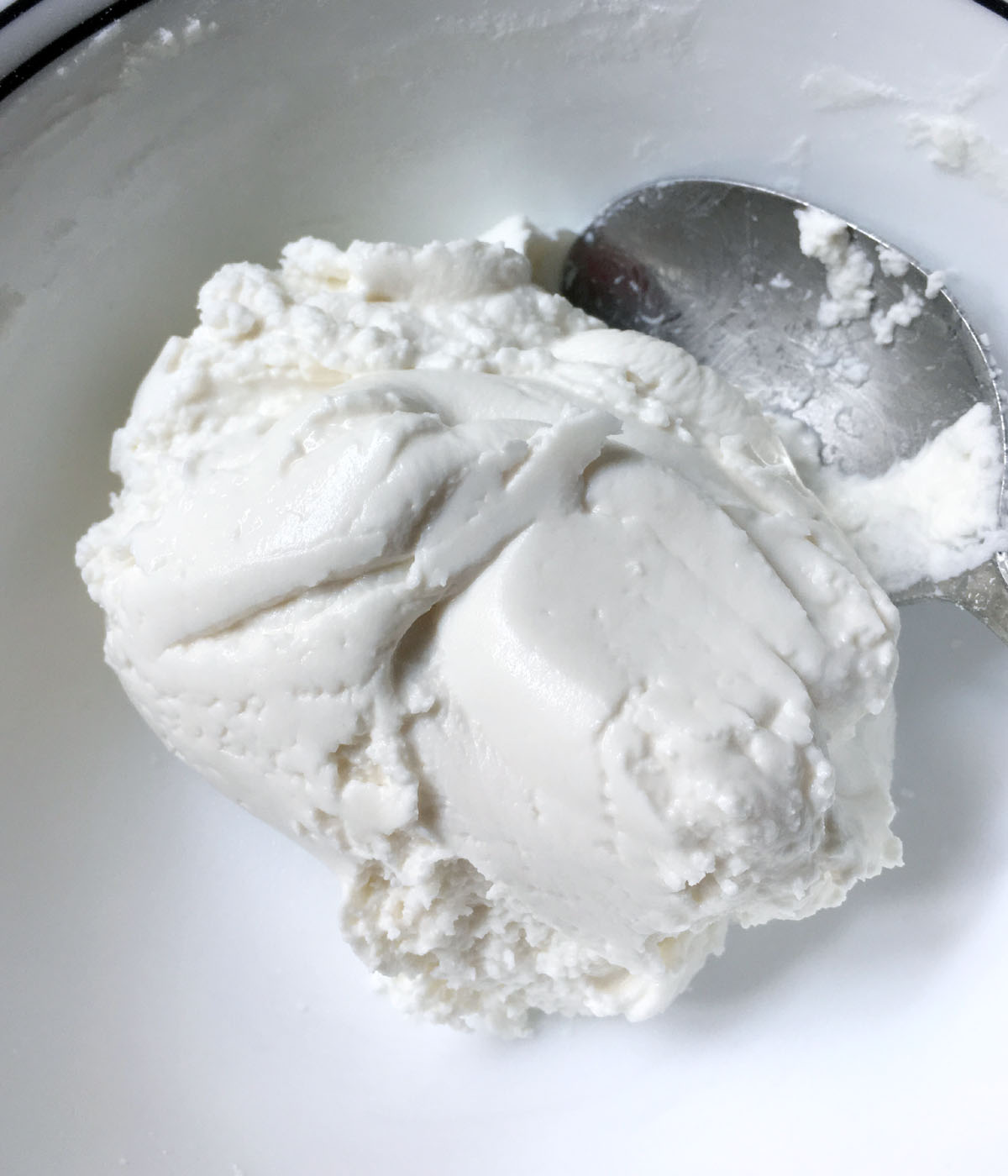
About 5 minutes before you are ready to serve the soup, take a chunk of dough and roll it in your hands to form a log shape and break off small chunks about the size of a grape, rolling each chunk roughly into a ball.
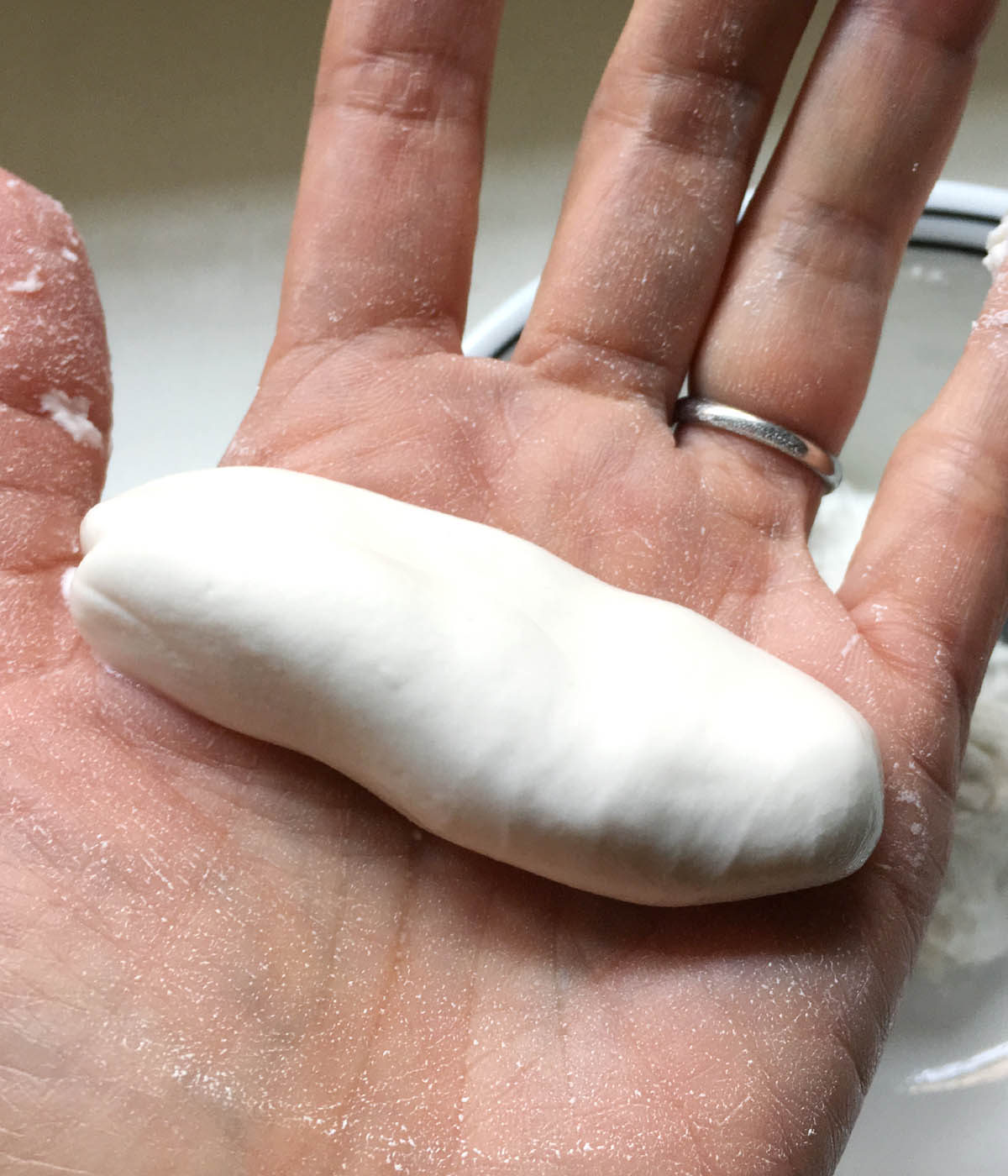
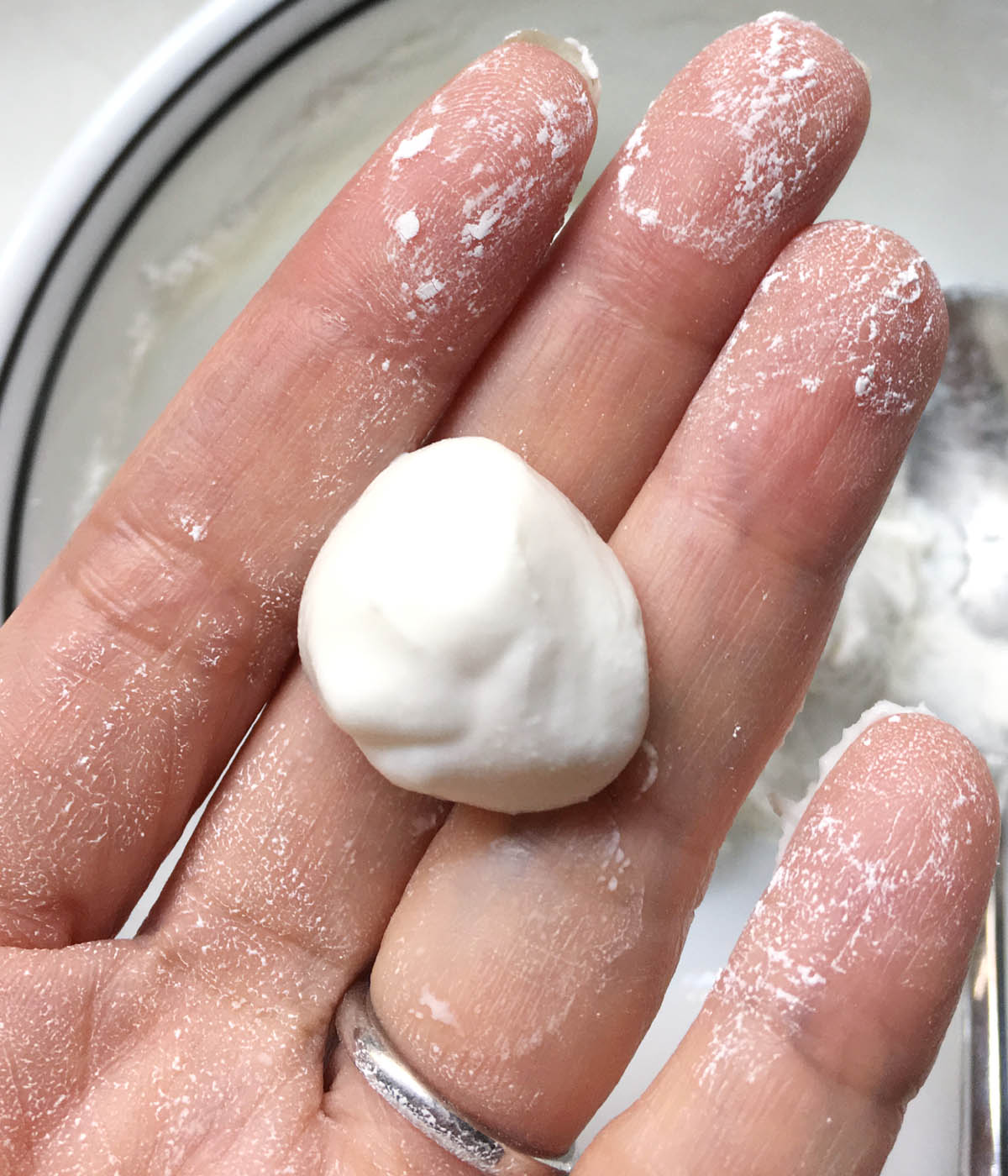
While it may be tempting to make the dough balls bigger than a grape, they will be more difficult (not to mention less enjoyable) to eat if they're bigger than that. So err on the side of being smaller!
How to Make the Winter Solstice Soup
Add all sausage, mushrooms, and daikon to the broth and bring it to a boil. Reduce the heat and let the soup simmer for about 20 minutes.
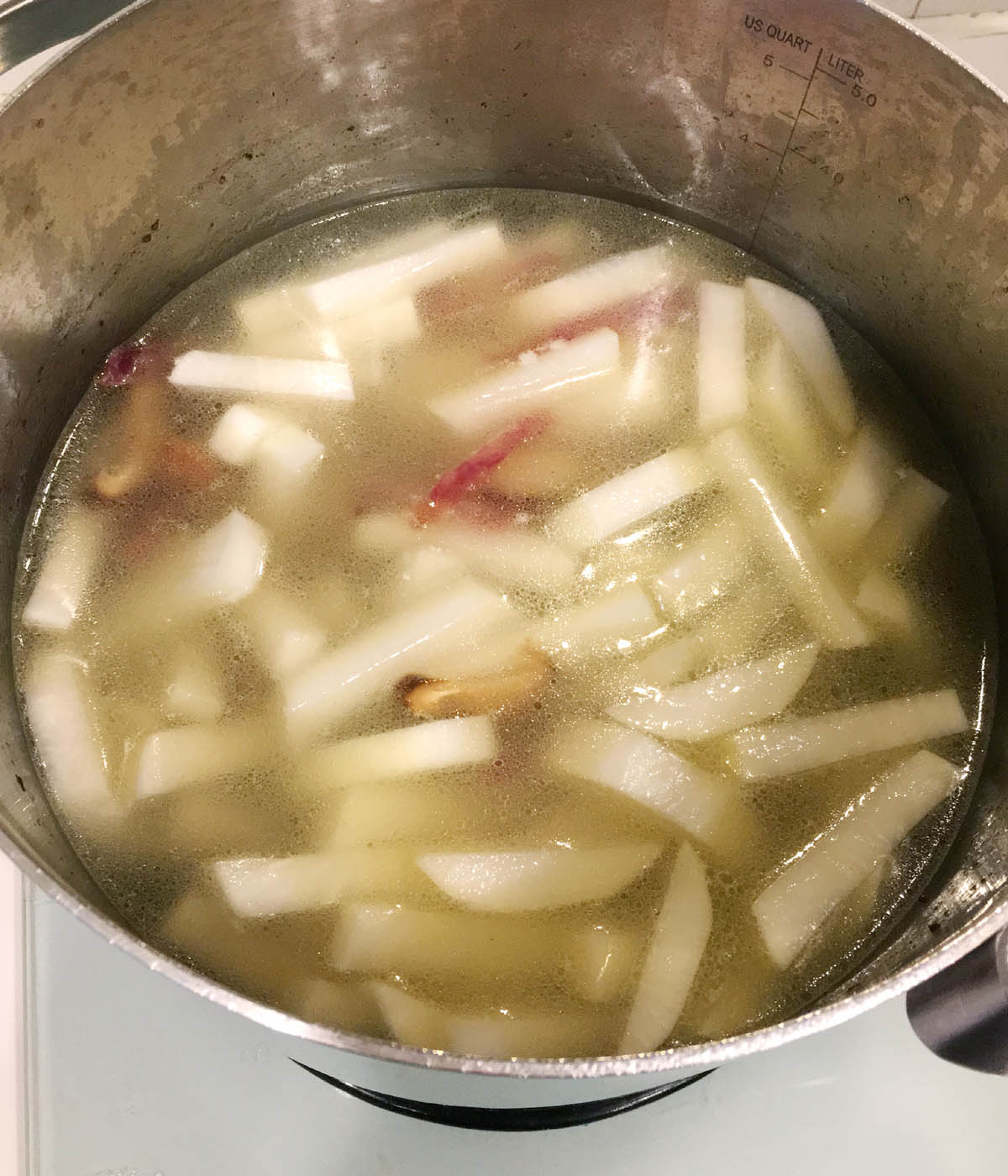

A few minutes before you are ready to serve, add the dough balls, and remember to only add whatever will be eaten right away (my mum would always ask us how many we each wanted). They will cook very quickly and you know they are done when they float to the top.
Commonly Asked Questions
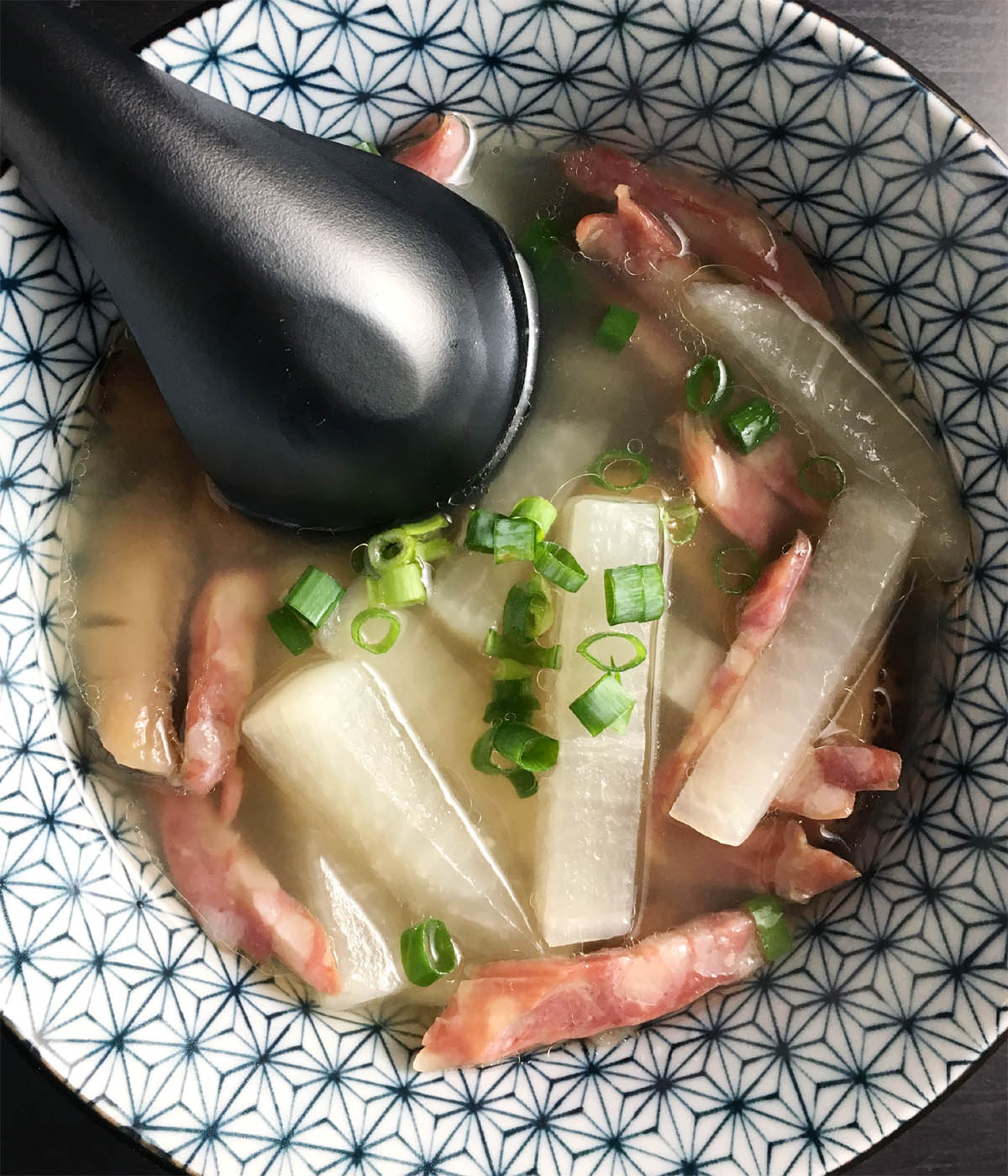
No, you don't. The dough balls are part of the experience of enjoying this soup and all its textures. However, the soup is also just as delicious without them!
The dough balls become too soft and mushy if left in the soup overnight and then reheated. It is best to only cook as many dough balls as will be eaten right away.
Simply cool the soup down and refrigerate the leftovers. The flavors from the daikon, mushrooms, and sausage will only make the soup taste better!
Place the dough in a resealable container on the counter. Alternatively, keep it in the fridge, but let it come to room temperature so it's easier to handle when rolling and shaping the dough balls.
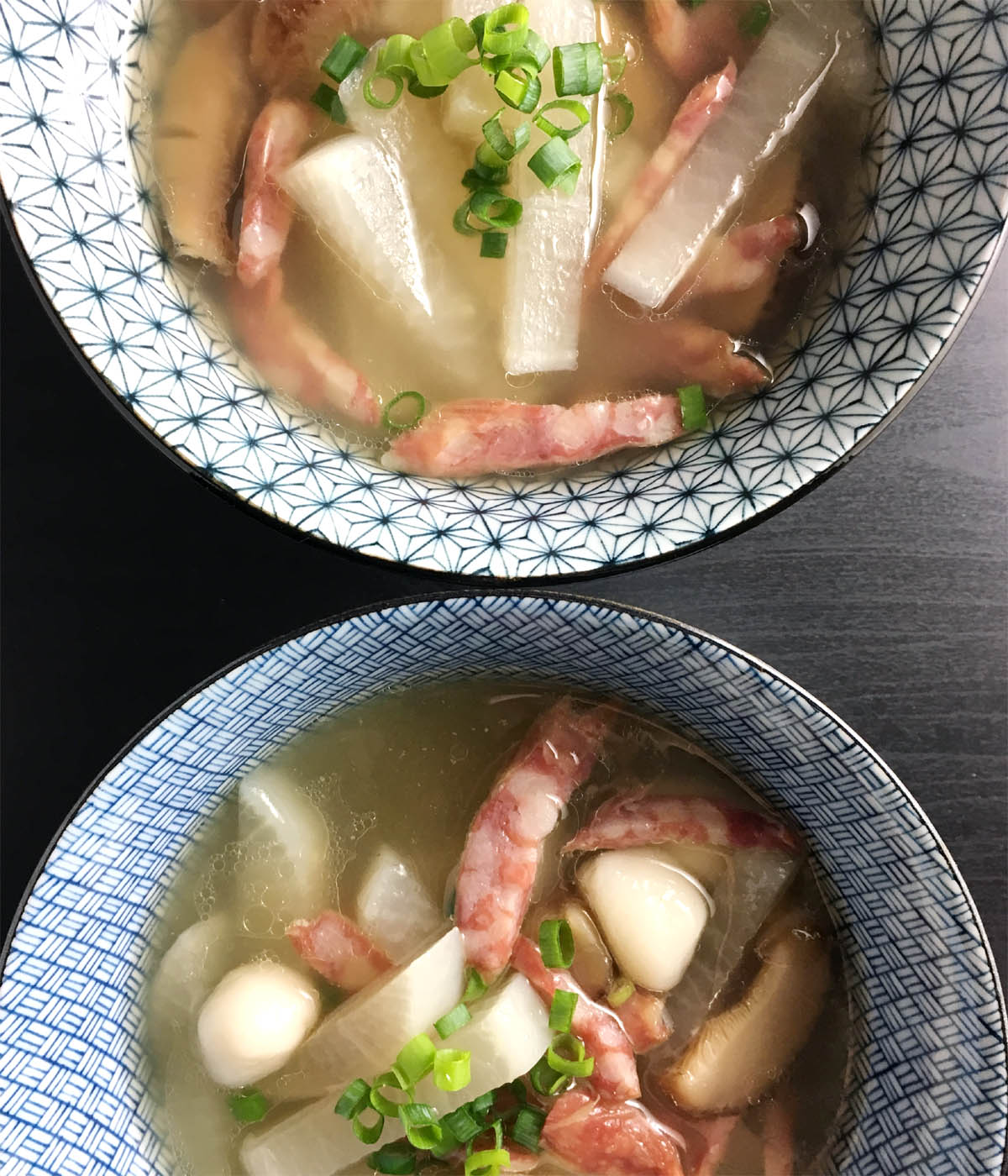
You Might Also Like...
If you're interested in other Chinese dishes inspired by my mum, be sure to check out:
Whenever my mum made this soup, she said it would keep us really warm...and she was right! Perhaps it was the hot dough balls, radiating heat on the inside as they digested that made us feel warm, or perhaps it was that they made us feel so full that we felt comfortable and cozy inside. I'm not exactly sure, but whatever it was, she was right, and we always welcomed it in the middle of the December!
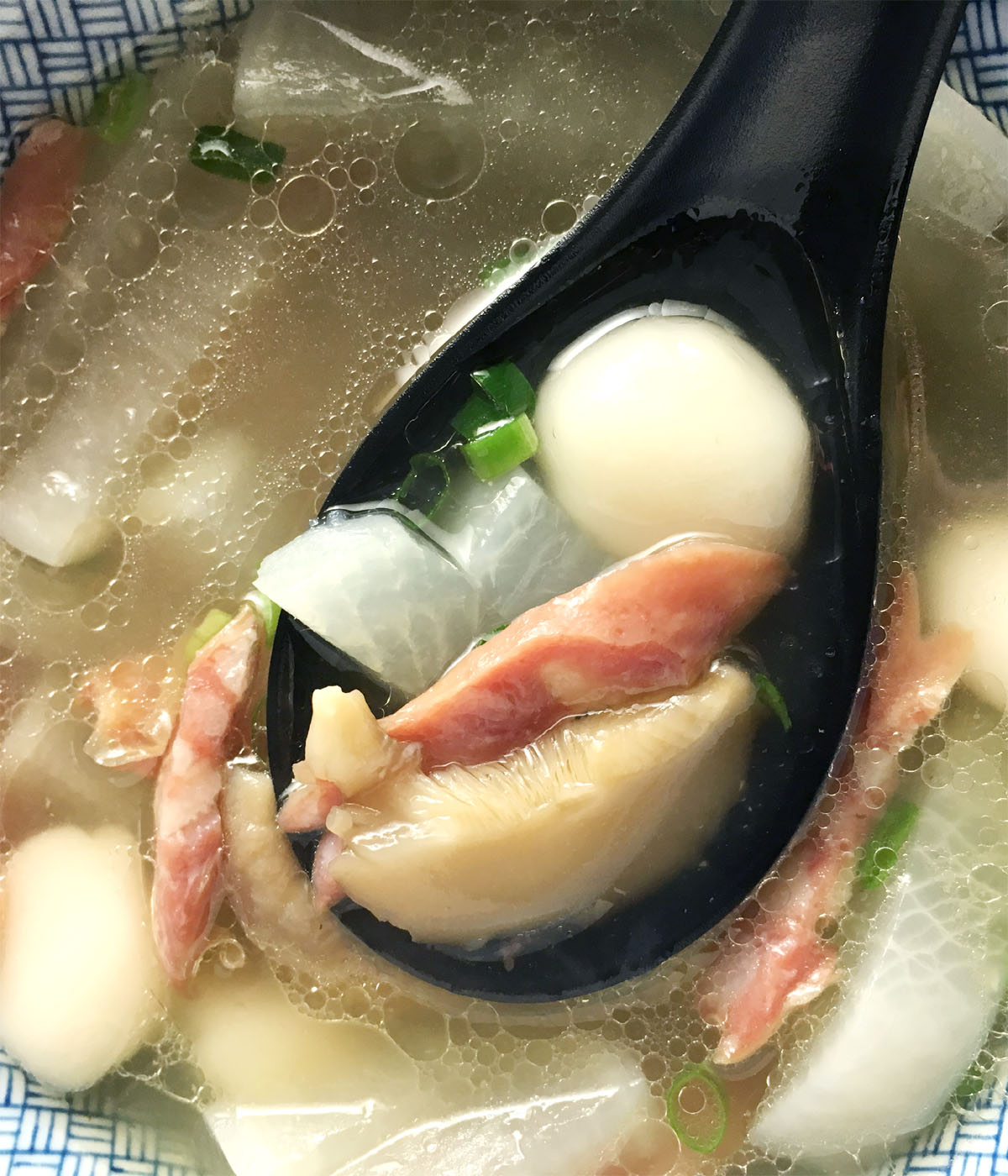
And there you have it, a recipe for another dish from my childhood that stirs up fond and delicious memories that I'm thrilled to be able to share with you! Traditional savory Chinese Winter Solstice soup is rich, comforting, and intensely flavorful. It is, quite honestly, so good that you won't want to wait until Winter Solstice to make it!
~ Lisa.
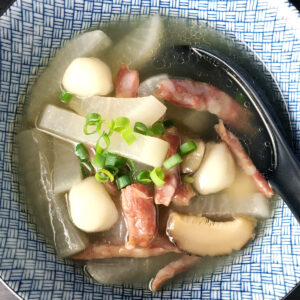
Savory Chinese Winter Solstice Soup
Ingredients
Broth:
- 2 lbs. any combination of chicken bones, wings, wing tips
- 8 cups water
- 1 knob peeled ginger, about the size of half a lemon
- 1 tablespoon sea salt
Soup:
- 2-4 Chinese sausages (lop cheng)
- 4 large dried Chinese (shiitake) mushrooms, soaked in water for at least 4 hours
- 1 lb. daikon radish
- Salt to taste
Dough Balls (Yuan):
- ¾ cup glutinous rice flour
- ⅓ cup water
Garnish (optional):
- Chopped green onions
- White pepper
- Fried garlic
Equipment
Instructions
Broth:
- Combine chicken pieces, water, ginger, and salt in a large pot. Bring to a boil over medium-high heat.
- Lower heat to medium so soup is gently boiling and, using a skimmer or spoon, remove the scum from the soup. Repeat until no more scum appears.
- Reduce heat to a low, cover pot with a lid leaving a slight gap, and simmer for 1 ½ - 2 hours.
Preparing Ingredients:
- Rinse Chinese sausages. Cut each sausage in half lengthwise, then cut each side into diagonal strips.
- Squeeze some of the liquid from the soaked Chinese mushrooms. Trim and discard the stems, then slice the mushroom caps.
- Peel the daikon radish. Slice the daikon, creating discs approximately ¼" thick. Lay the discs flat on the cutting board and cut them into thick strips.
Making the Soup:
- After 2 hours of simmering, remove chicken bones, ginger, and any debris from the broth.
- Add Chinese sausage, daikon radish, and Chinese mushrooms to the broth. Bring to a boil.
- Simmer for 30 minutes.
Dough Balls (Yuan):
- Mix the glutinous rice flour and water until a dough forms. The dough should not be too dry or too sticky; add more rice flour or water a little at a time as necessary to achieve the correct consistency. Cover the dough until ready to use.
- Take a piece of dough in your hands and roll into a log-like shape.
- Break off a small chunk of dough, about the size of a grape, and drop it into the soup. Continue with as many dough balls as you choose to have in the soup. Heat through. Dough balls are cooked once they are all floating on the surface.
- Serve hot and garnish with chopped green onions, white pepper, or fried garlic, if desired.
Notes
- Soak dry Chinese mushrooms for at least 4 hours or overnight.
- I use all chicken bones/pieces for the broth, but you can also use a combination of pork and chicken or all pork bones if you prefer.
- Be sure to use glutinous or sweet rice flour for the dough balls, NOT regular rice flour. If you use regular rice flour, the dough balls will not float and they will be hard instead of soft and chewy.
- Make sure the dough balls are not too big. It can be tempting to make them bigger than the size of a grape, but they do expand a little in the soup and they are harder to eat if too big.
- Only cook as many dough balls as you will be eating at that time as they do not fare well being left in the soup for too long and reheated. You can also skip them altogether if you prefer.
- If you have leftover yuan dough, cover with plastic wrap and place in the fridge for up to a couple of days. Bring it to room temperature before using.
- For extra vegetables in the soup, cut up some napa cabbage and add it during the last 5-10 minutes before serving.
- A few dried scallops added with the sausage, daikon, and mushrooms also adds umami to the soup.
Nutrition
**This recipe was originally published December 8th, 2019 and republished in December 2022 with updated photos and writing.
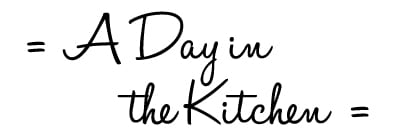

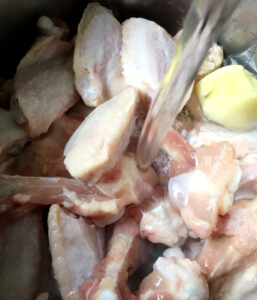
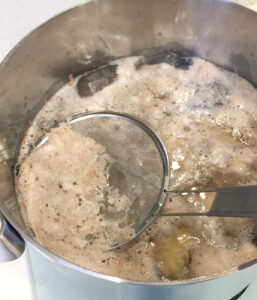
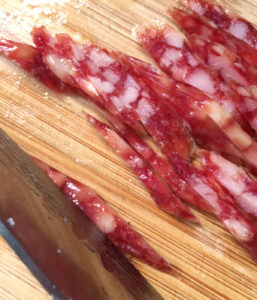
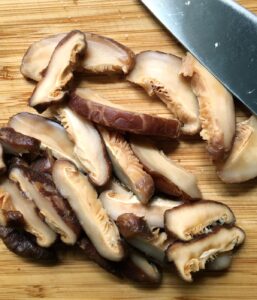
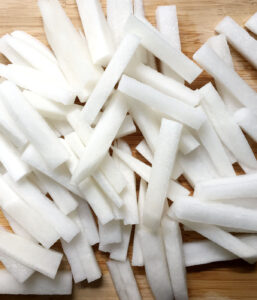


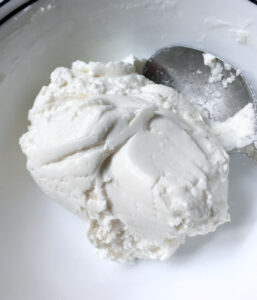
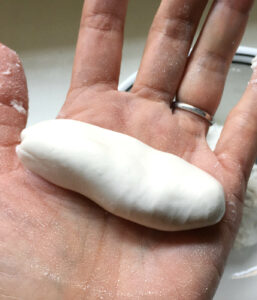
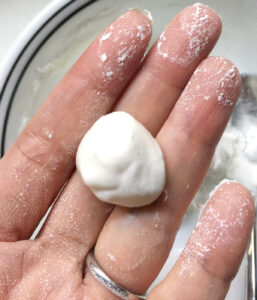

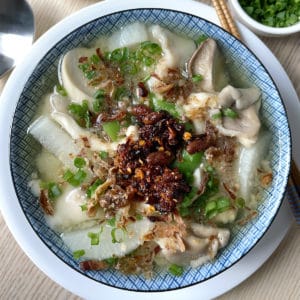
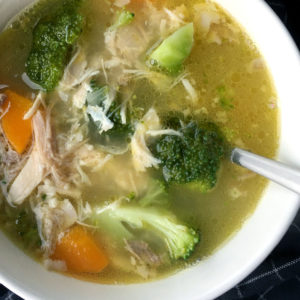
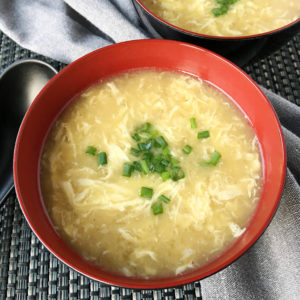
Alice
Hi from Canada,
I came across your site looking for savoury yuan and how to make the dough balls. Was wondering if anyone made this soup. My parents were from the old country and tradition and made this soup much similar to your recipe. They also added other vegetables like Napa, bok choy, other green leaf vegetables and dried shrimps. They used a combination of chicken and pork bones to make the broth. It was a full meal! Will check out your other recipes too. Thanks for your posts!
Hello, Alice! Always nice to hear from someone from my home country! Thanks for the message...it's nice to now that your parents made their soup similar to my recipe. I'm sure there are many variations of this same soup from family to family and all are delicious and nostalgic.
Gloria Lau
Good presentation. Excellent format. Easy to follow. Great job.
Never thought of using Chinese sausage in soup. This is the first.
Thank you.
Thanks, Gloria! I love the Chinese sausage in it...adds that nice sweet and salty and umami flavor to the soup.
Ryan lee
Thank you for the recipe this has brought back so many memories as recently my grandparents have passed away and my dad and aunt missed this soup I was able to make it thanks to you and to see tears in my families eyes was simply amazing thank you
Oh my goodness. Thank you so much for trying my recipe and for your comments, Ryan. Reading that the soup had such an impact on your family is incredibly humbling, and I'm so happy that you all liked it. 🙂
Helen
Brilliant recipe! Thanks for sharing this. We wasn’t able to visit my in laws and the family gathering this Christmas because of covid and the tradition was always to have this soup amongst other family traditions. I was able to recreate the soup with your help and the kids loved it! Very tasty! They also helped to make the tong yuens which was fun. Reminded us of family gatherings the noise and chaos which we missed. Hopefully we can continue with tradition with our kids.
How wonderful, Helen! It's too bad that you were not able to visit with family this year, but I guess that you being able to recreate the soup with the help of your kids is one positive from Covid restrictions. Thanks so much for trying my recipe and for sharing your comments!
Laura
I grew up eating this soup on winter solstice. It has always been a favorite of mine and I made it once when I moved out many, many years ago. That didn't go too well because I used rice flour instead of glutinous rice flour so the yuan never floated to the top. Anyway, I haven't made it since until today. Your recipe is so similar to what my parents use to make and that inspired me to give it a try. It turned out so yummy and brought back so many memories, Thanks.
I'm so glad you found this recipe and that you liked it, Laura. I love that this dish was able to bring back good memories and had an impact emotionally, and not just on your taste buds! Thanks so much for your comments.
Eva
Thank you so much for posting this recipe. My mother passed a couple of years ago and I hadn't had the soup since before she moved into the nursing home. Being COVID-in-place right now with my grown daughter, I decided to do some "heritage" cooking to share with her. She had vague memories of this soup from when we would fly in to visit my mother for the holidays. We'd come in on a red-eye flight, drive to PorPor's house, take a nap and wake up to this lovely soup. Honestly, I always loved the soup... not so much the dough balls which my mom filled with a brown sugar candy. Alas, we made a modified version of your recipe, with the ingredients my mom used which included the turnip, lop cheung, and ground pork, but no mushrooms. It turned out fabulously. Your dough balls turned out better than hers, but maybe it was because she would let them sit in the soup while we napped. Thank you for helping me walk down heritage lane! Be well and stay safe!
I loved reading about how you made this soup with your daughter and how you have memories rooted with your mom making the same thing. I'm happy that my recipe helped inspire a walk down heritage lane, and it sounds like this soup might have kept your warm in more ways than one. Thanks so much for sharing your story, Eva.
Mae Hung
I HAVE to try making this! Do you have suggestions ass to how to store the leftovers? Uncooked Yuan in the fridge and then cook in broth on 2nd day? Can i cook the yaun ahead and then store them separate from the broth for leftovers? Thank you!
Thanks for the question, Mae. My mum did both...stored a ball of uncooked yuan dough in the fridge and then formed the dough balls right before dropping them into the reheated soup, and she also pre-cooked yuan and stored them in the fridge until she was ready to use them. I only make as much yuan dough as I plan to use for a single meal, and then make a fresh batch to add to leftover soup later. Any of these ways work! I hope you like it!
Mae
Thanks so much! My parents used to make this for us but i couldnt recall how they saved the yuan. Cant wait to try this on my own!
Megan
So good! Reminds me of my grandma’s
Thanks, Megan!
Christine
The broth and simplicity were great. The yuan dough balls never floated to the top and were hard inside? What am I doing wrong since I followed the recipe?
My guess is that you may have used regular rice flour as opposed to glutinous rice flour. If you use regular rice flour, they will not float and they will be hard when cooked. It has to be glutinous rice flour, as stated in the ingredients, also known as sweet rice flour, for the dough balls to work properly. I hope you'll give them another try, Christine!
Christine
Thank you Lisa! I retried your recipe with the glutinous flour....and yes it worked out perfectly and was very tasty! 😉 Loved it. 😉
Perfect! Thanks so much for giving it another try, and I'm really glad they worked out!
Bernice Hill
What a perfect soup for this time of year! I've always been fascinated with traditional Chinese soups as I know that there is often a soup for every ailment or for balancing Qi. This soup looks so comforting and delicious...especially with that lop cheng.
Thanks, Bernice! Yes, there are several traditional Chinese soups that are either symbolic in some way or that serve some purpose beyond just tasting good!
Colleen
I always look so forward to winter solstice when the daylight time starts to increase. Its a wonderful thing to celebrate, and having an official soup is perfect. This one looks so delicious, and I'm pinning to try. Thanks, Lisa!
Thanks, Colleen! I hope you like it!